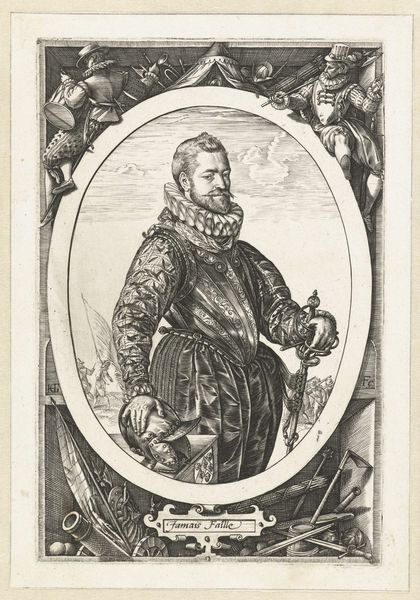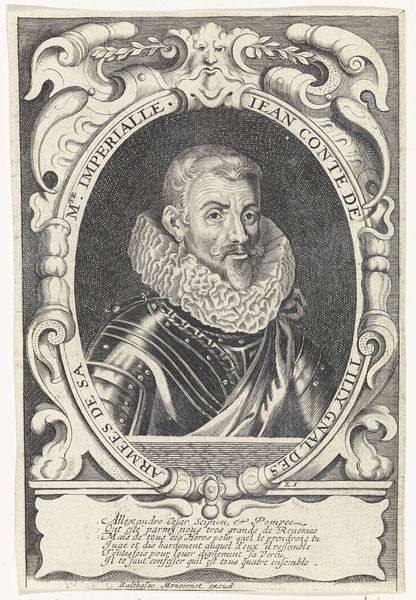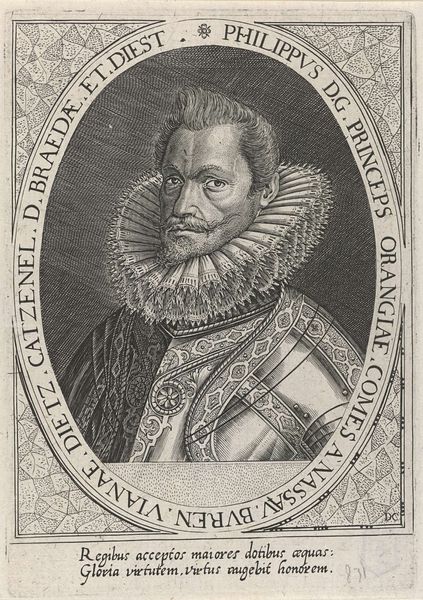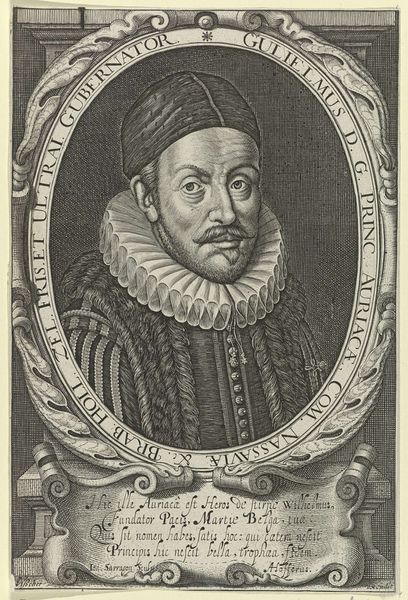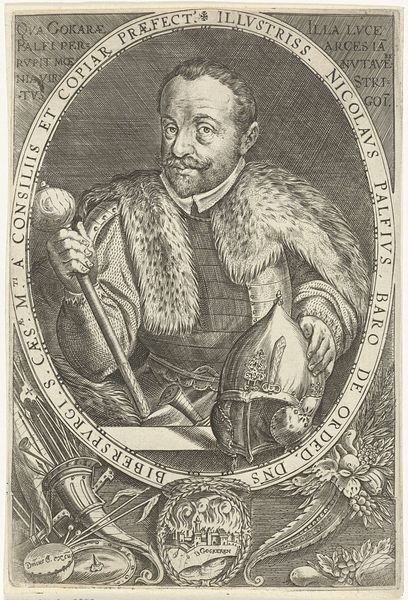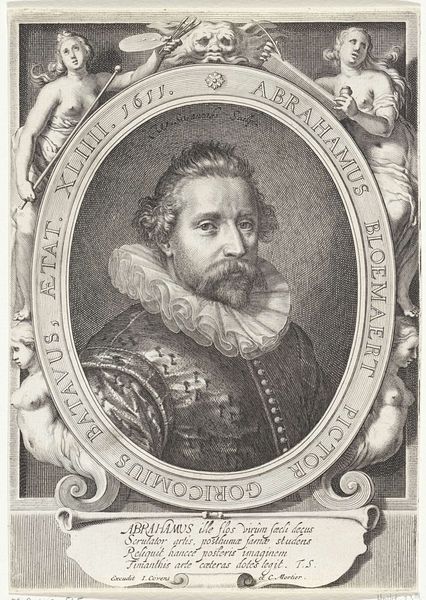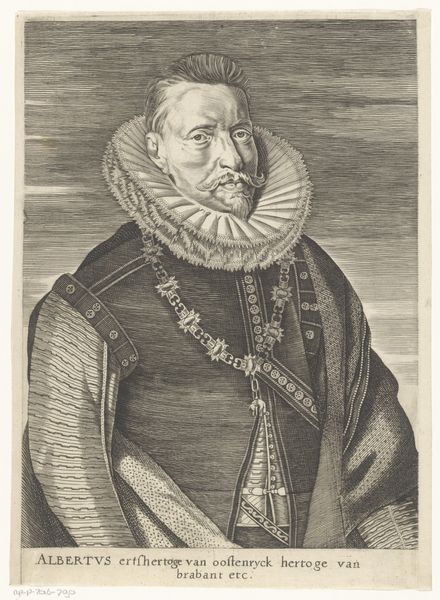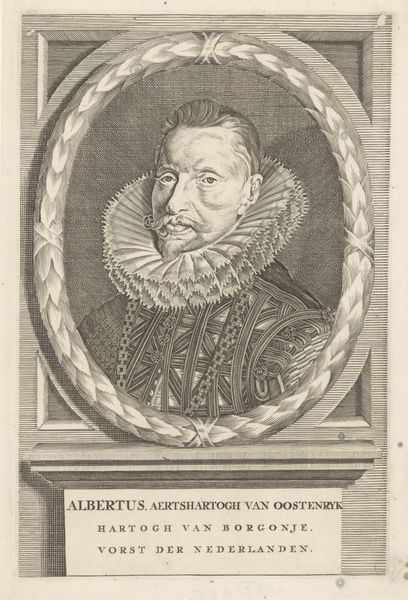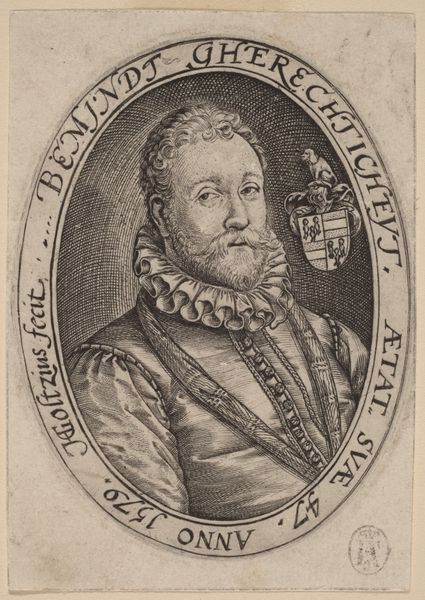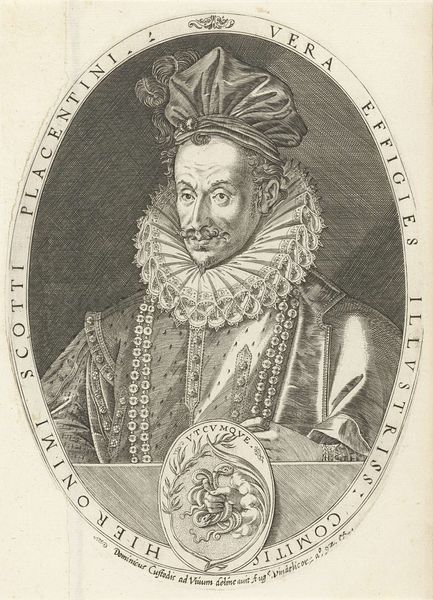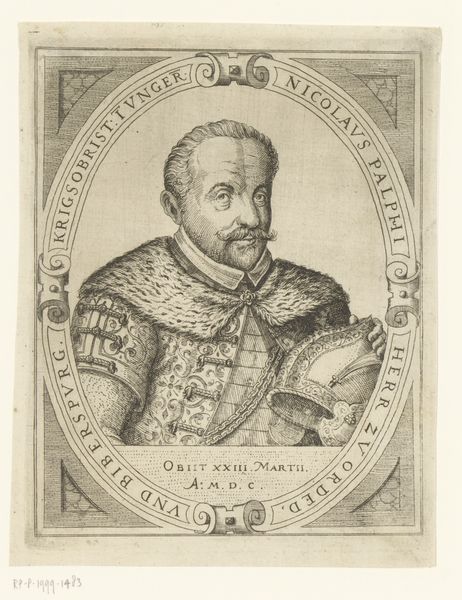
print, intaglio, engraving
#
portrait
#
baroque
# print
#
intaglio
#
old engraving style
#
limited contrast and shading
#
pen work
#
engraving
#
realism
Dimensions: height 154 mm, width 106 mm
Copyright: Rijks Museum: Open Domain
This engraving depicts Philips Willem, Prince of Orange. Though the artist is unknown, the print was produced in the Low Countries, likely in the late 16th or early 17th century. Images of rulers were carefully crafted in this period. Visual codes and cultural references emphasize Philips Willem's status. He is framed by an oval border with Latin inscriptions listing his titles and territories. The use of Latin, the language of the Roman Empire, associates Philips Willem with a classical heritage of power and authority. The inclusion of orange fruit within the border is a direct reference to his dynastic name. The formal style of the portrait, with its emphasis on detail and idealized features, also served to reinforce the sitter's elevated social position. As art historians, we need to examine these visual strategies, and also consider the social and political context in which the image was created. Studying the history of the House of Orange and the conventions of portraiture in the Netherlands at this time will bring a greater understanding of the Prince, and of the image itself.
Comments
No comments
Be the first to comment and join the conversation on the ultimate creative platform.
